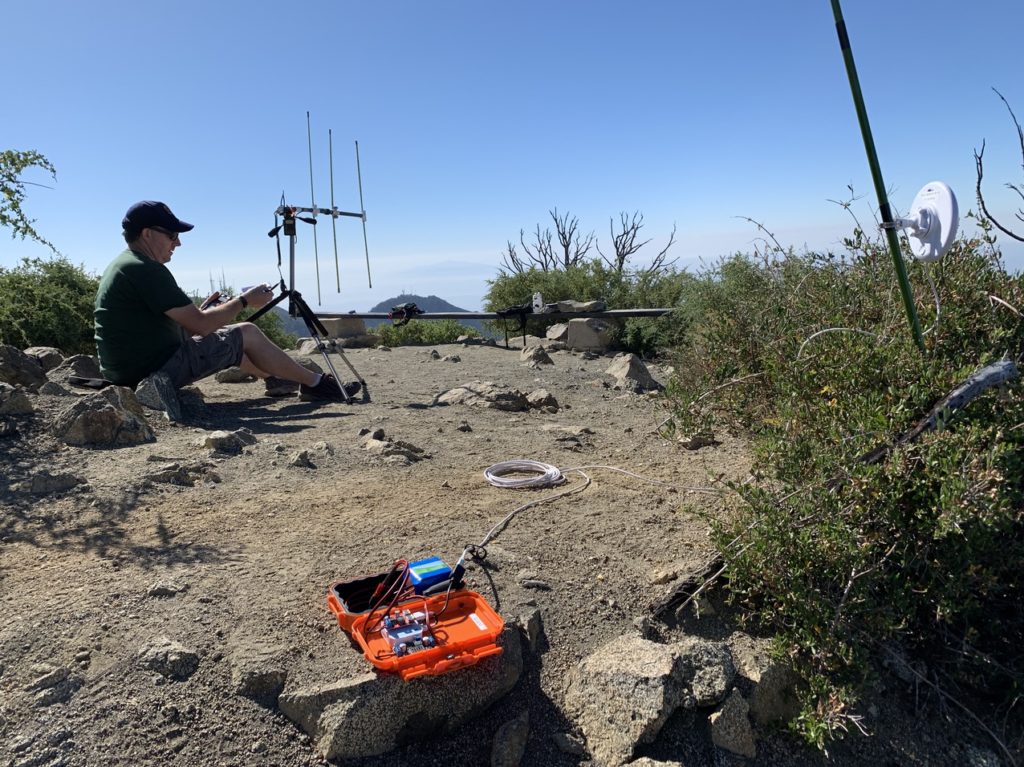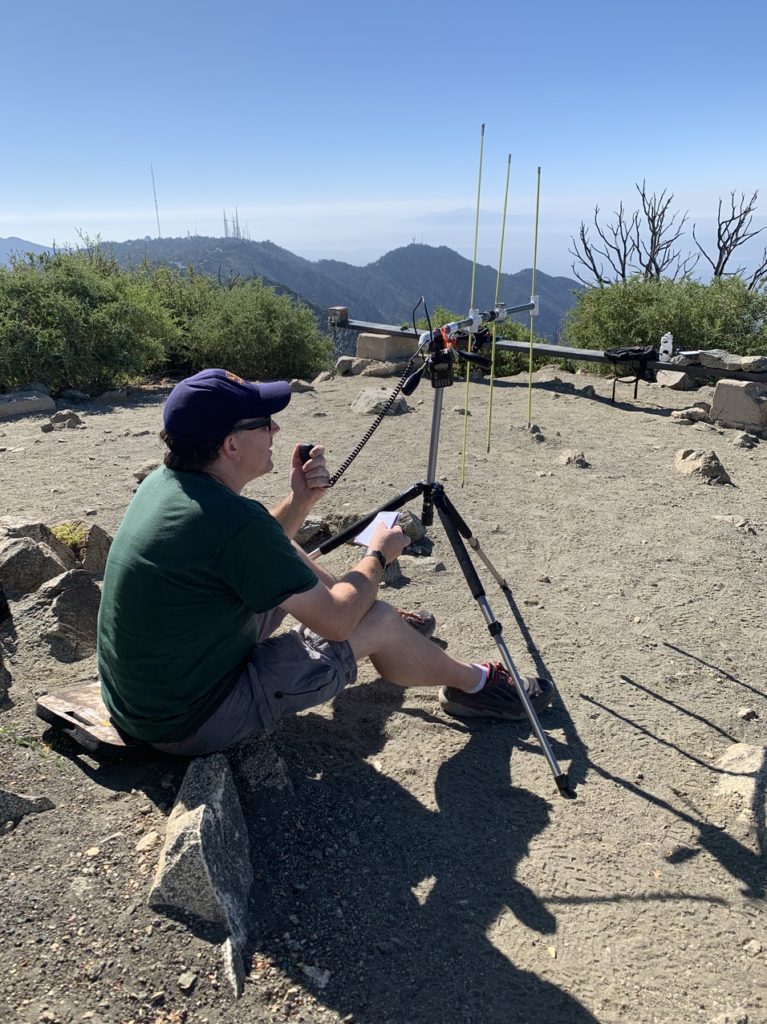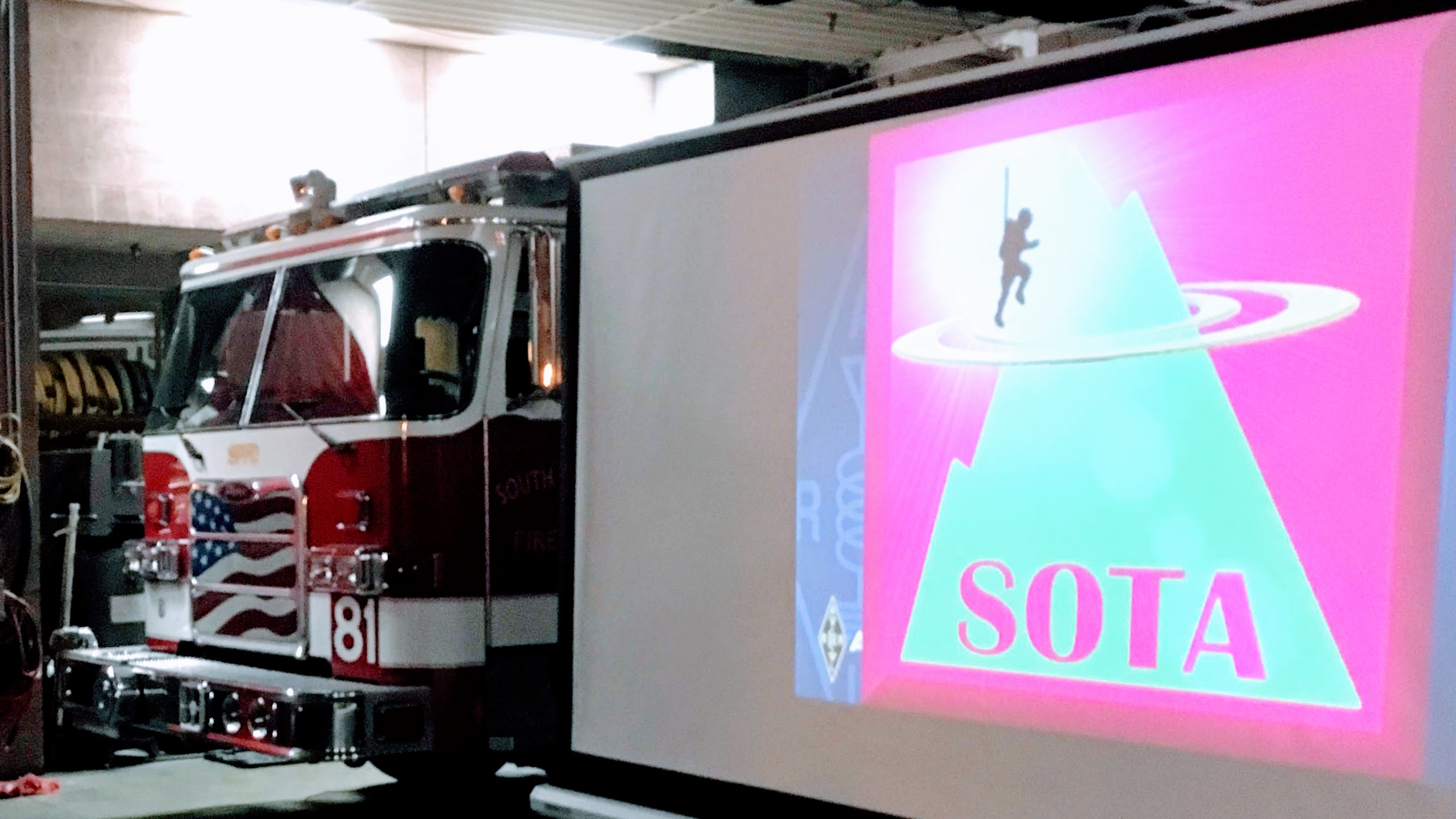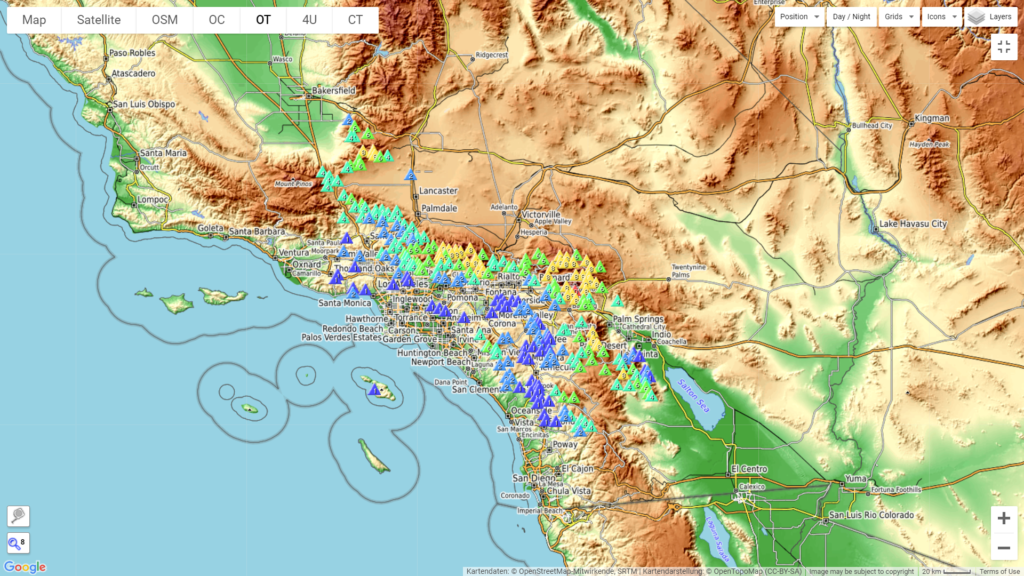Dear SPARC members and friends,
Members of the South Pasadena Amateur Radio Club will be activating a few local Summits on the Air (SOTA) peaks on Sunday, July 18, 2021. SOTA is a great opportunity to combine hiking and portable operating (see the Summits on the Air website for more information). Peaks and times will be posted as “alerts” and “spots” on SOTAwatch during the day on Sunday. Bands and modes will vary but the operators will use the “North American Adventure Frequency” 146.580 MHz FM simplex for local contacts at some point during their activations. Please feel free to make contact with those operators, they will certainly appreciate adding you to their logs.
If you are interested in activating a peak, consult the map at SOTLAS and the Bobcat Fire closure map to find peaks in open areas of the Angeles National Forest. As with any voluntary wilderness activity, choose a peak well within your physical ability, consult weather and trail conditions, take appropriate water/food/clothing/equipment, and tell someone where you are going and when you expect to return.
You can use the Contact Us page of our site to let me know if you plan to participate (activator or chaser), and I’ll make sure we listen for your call sign and maybe even arrange some summit-to-summit contacts.
Be safe and have fun,
Richard Besocke, KI6ZKM
SPARC President
To inspire your own SOTA adventures, below is a report from SPARC member Jose Gonzalez KM6PFM about activating Mt. Langley in the Sierras last weekend. Langley is a 14,000’+ peak neat Mt. Whitney and is quite an accomplishment.
A lot busier area than I had envisioned. For some reason I thought people would be elsewhere. Boy was I wrong. Arrived at sundown. Horseshoe Meadow is in the thin air — 10,000ish feet. [The area] has to offer, yes, horses. I overheard a little boy say, “Boy, these horses are loud!” lol… Camp full, luckily scored a parking spot. My hiking group wanted to get all 22ish miles done in a day and rest back at Horseshoe Meadow. So at 4am the next morning with views of the Milky Way overhead, we headed out. Cottonwood Lakes were awesome with the sunrise. Old Army Pass was a bear in the searing sun (take more water than you think if you come out). Up on the pass at 12,000 feet, found some bighorn sheep roaming. Followed the Jenga-style cairns on the way to the summit. Some clouds rolled in, and it started snowing a bit. The rocks get larger, and the ground gets sandier. Made it to the summit, and after a few pics, it started raining under partially-cloudy skies. Lots of blue sky still and thankfully no thunder or lightning.
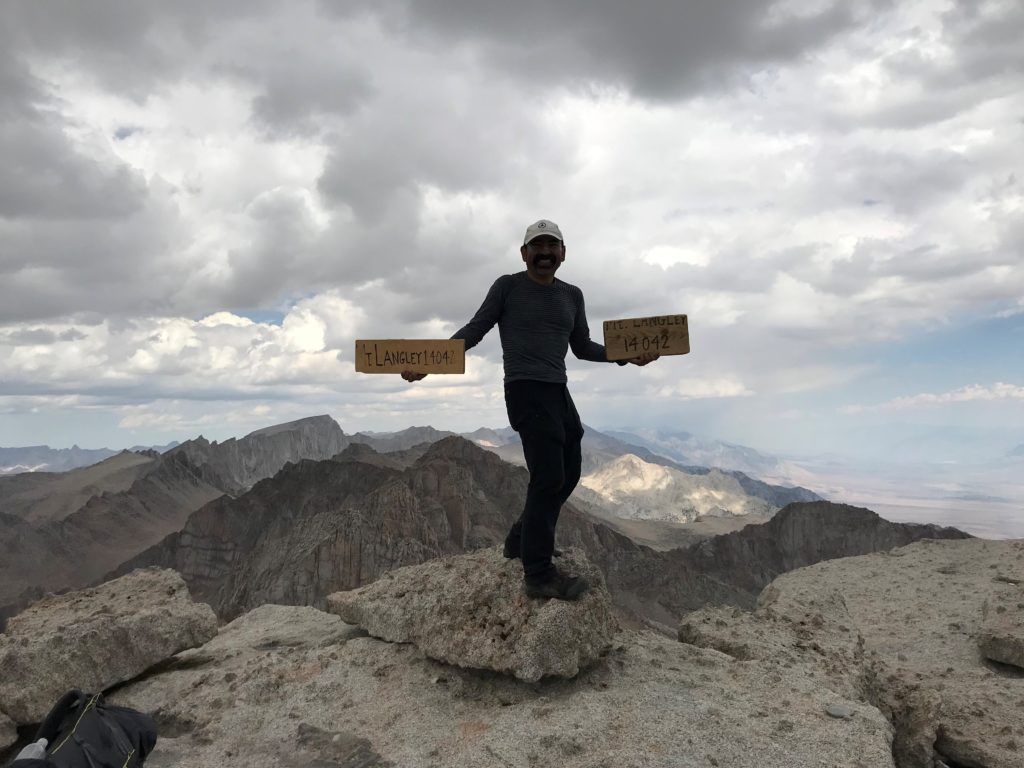
Quickly assembled my Yagi in the rain and got to it. Tried to self spot with SOTA Goat, but I guess the signal bars on my phone were just there for decoration because it wouldn’t establish the link, lol. Made a few local contacts in Bishop area then aimed the Yagi south. Very happy to reach ~280km away to W6/CT-013 Keller Peak where W6MHS, KJ6IJT, KM6WCO [thanks for spotting me!], and KE6PLA had set up to try and catch me. Some raw video is linked below. I don’t normally get to hear myself on the other side of the QSO, so that was cool. I was only active about 10-15min then had to pack it up due to increasing rain/snow and friends clamoring for me to hurry up ?. Made it back down and enjoyed a nice evening at camp. Grateful for no nausea or altitude sickness Could have benefitted from another day at camp — blood oxygen levels ranged from a low of 82% on arrival day to 85-93% on summit day. All in all, another memorable activation!



